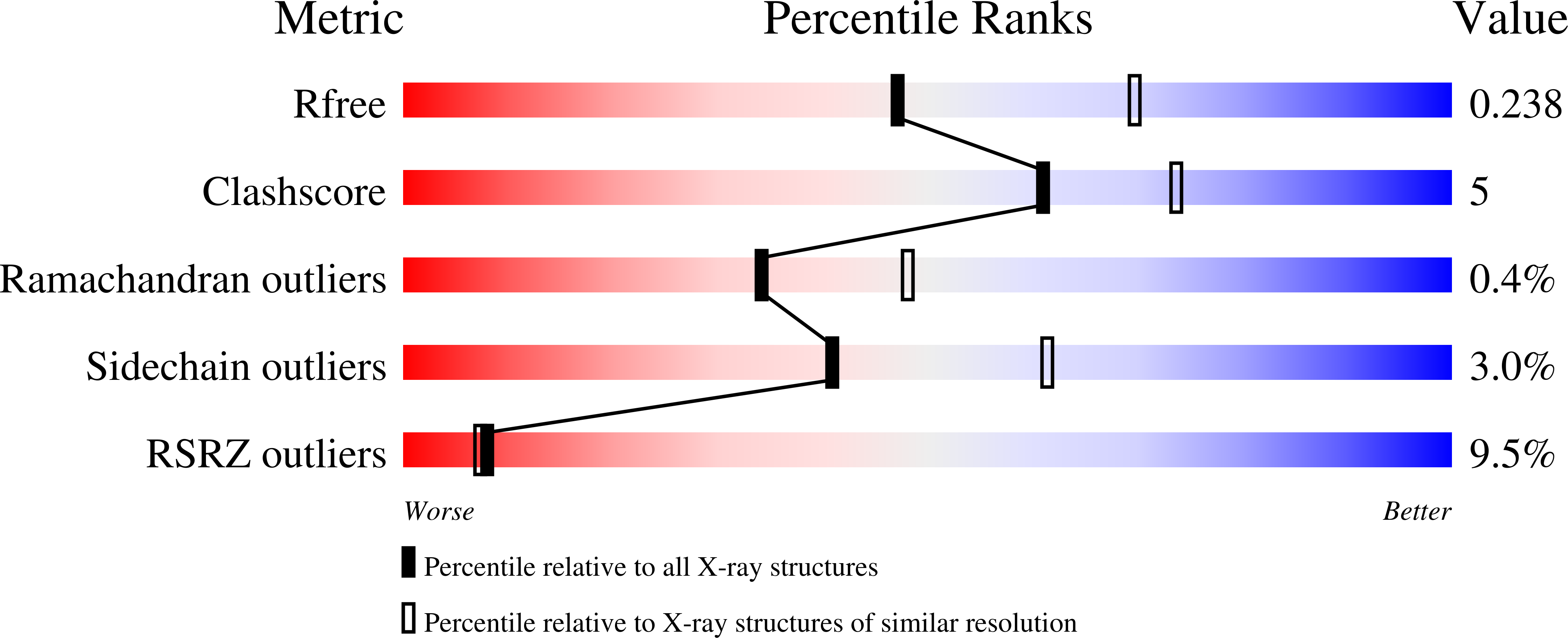Structural Insights into the Azole Resistance of the Candida albicans Darlington Strain Using Saccharomyces cerevisiae Lanosterol 14 alpha-Demethylase as a Surrogate.
Graham, D.O., Wilson, R.K., Ruma, Y.N., Keniya, M.V., Tyndall, J.D.A., Monk, B.C.(2021) J Fungi (Basel) 7
- PubMed: 34829185
- DOI: https://doi.org/10.3390/jof7110897
- Primary Citation of Related Structures:
7RY8, 7RY9, 7RYA, 7RYB - PubMed Abstract:
Target-based azole resistance in Candida albicans involves overexpression of the ERG11 gene encoding lanosterol 14¦Á-demethylase (LDM), and/or the presence of single or multiple mutations in this enzyme. Overexpression of Candida albicans LDM (CaLDM) Y132H I471T by the Darlington strain strongly increased resistance to the short-tailed azoles fluconazole and voriconazole, and weakly increased resistance to the longer-tailed azoles VT-1161, itraconazole and posaconazole. We have used, as surrogates, structurally aligned mutations in recombinant hexahistidine-tagged full-length Saccharomyces cerevisiae LDM6ˇÁHis (ScLDM6ˇÁHis) to elucidate how differential susceptibility to azole drugs is conferred by LDM of the C. albicans Darlington strain. The mutations Y140H and I471T were introduced, either alone or in combination, into ScLDM6ˇÁHis via overexpression of the recombinant enzyme from the PDR5 locus of an azole hypersensitive strain of S. cerevisiae . Phenotypes and high-resolution X-ray crystal structures were determined for the surrogate enzymes in complex with representative short-tailed (voriconazole) and long-tailed (itraconazole) triazoles. The preferential high-level resistance to short-tailed azoles conferred by the ScLDM Y140H I471T mutant required both mutations, despite the I471T mutation conferring only a slight increase in resistance. Crystal structures did not detect changes in the position/tilt of the heme co-factor of wild-type ScLDM, I471T and Y140H single mutants, or the Y140H I471T double-mutant. The mutant threonine sidechain in the Darlington strain CaLDM perturbs the environment of the neighboring C-helix, affects the electronic environment of the heme, and may, via differences in closure of the neck of the substrate entry channel, increase preferential competition between lanosterol and short-tailed azole drugs.
Organizational Affiliation:
Sir John Walsh Research Institute, Faculty of Dentistry, University of Otago, PO Box 56, Dunedin 9054, New Zealand.

















